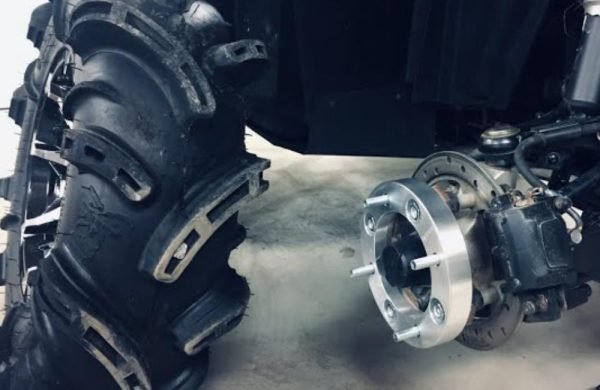When the vehicle’s engine operates, the intake and exhaust valves open and close continuously to move the pistons up and down in the cylinder. This mechanical movement requires a constant supply of oil for lubrication.
The valve cover gasket helps prevent oil from escaping the engine. The gasket works as a tight seal between the engine and valve cover so no engine oil is leaked.
Table of Contents
Importance of Valve Cover Gasket
Helps in Oil Retention
In terms of oil retention, the main role played by the valve cover gasket is to prevent leaks. While the engine works, oil is pumped under pressure to different parts for lubrication.
The valve cover gasket ensures a perfect bond between the valve cover and the cylinder head, preventing any pressurized oil from escaping from its passages into the engine bay.
Many engine components, including camshafts, lifters, and rocker arms, also require a steady and metered oil flow for lubrication. If a valve cover gasket leaks, this lubrication process can be interrupted. Lack of proper lubrication increases the friction between moving parts, which results in expedited wear and possible damage. Lubrication helps to preserve the life span and performance of the engine.
Keep The Engine Temperature Optimal
Temperature control is an important aspect affecting engine performance and life, and the valve cover gasket helps maintain appropriate temperatures in the engine compartment.
The engine develops significant heat during operation, particularly in high-performance or heavy-duty roles. The valve cover gasket seals potential paths of escape for heat by creating a seal between the valve cover and the cylinder head. This thermal containment is necessary to maintain proper engine temperature levels.
If your car is overheating frequently and you have tried every remedy, but nothing is beneficial, then don’t panic. You should visit a reputed car repair mechanic to get the issue diagnosed and fixed.
Prevents Engine Contamination
Apart from keeping the engine clean, another vital purpose of the valve cover gasket is to prevent contamination. The valve cover gasket serves as a protective shield for the engine’s internal parts against all sorts of external elements.
It is exposed to dirt, dust, and debris because the engine operates in a number of environments. By providing a good seal between the valve cover and the cylinder head, the valve cover gasket keeps away these external contaminants.
Symptoms of Bad Gasket
Visible Signs of Oil Leaks
A bad valve cover gasket causes easily recognizable oil leaks; knowing more about them can help car owners identify the problem early enough.
With the start of valve cover gasket deterioration, its sealing capacity falls apart. This leads to the accumulation of oil in various parts of the engine. Visual and olfactory observations are used to spot oil leaks.
Burning Smell
The burning smell is yet another prominent symptom associated with a deteriorating valve cover gasket that drivers can easily pinpoint to ensure timely repairs.
Deterioration of the valve cover gasket may lead to oil leakage onto hot engine parts. This touch of oil and heated surfaces causes a particular burning smell. It has been known to have a distinct acrid and oily odor, which is quite conspicuous when the engine is running or just after it has been switched off.
Engine Misfires are Experienced
Misfires are one of the common symptoms that go hand in hand with a failing valve cover gasket, and knowing how misfires affect a car may allow the owner to detect them early enough before any other consequences develop.
The purpose of the valve cover gasket is to prevent oil from getting inside the spark plug wells. If the gasket fails, oil can escape into the spark plugs from these wells. This oil contamination prevents the spark plug from flicks, resulting in misfires.
Causes of Bad Valve Cover Gasket
Routine Wear and Tear
Valve gaskets are manufactured with materials like rubber, cork, or a mixture of both. These materials decompose under the influence of heat, pressure, and engine oil compounds. The repeated process of continuous expansion and contraction due to the heating and cooling cycles related to the engine causes elasticity loss in the gasket material.
The valve gasket, like any other part of the vehicle, undergoes wear and tear with increased driving. High mileage implies that the engine has been through more cycles, thus exposing the gasket to prolonged periods of heat and pressure. This premature wear can result in the decaying of the gasket material.
Exposure to High Temperatures
Engine components, such as the valve gaskets, operate under high temperatures. Constantly being subjected to high temperatures can make the gasket material lose its natural elasticity. As the gasket loses its ability to bend and move with changing conditions inside the engine, it becomes more likely that cracking or leaks will develop.
Overheating in the process of engine operation can affect the rate at which material for gasket is subjected to aging. With time, this causes weakening of the molecular structure of the gasket leading to severe brittleness and inefficiency to keep a good seal.
Incorrect Installation of Gasket
Valve gaskets are mounted in accordance with particular torque requirements. Uneven or over-torquing during the tightening process causes uneven gasket compression. This can distort the gasket and cause leaks because it cannot maintain a uniform seal between the valve cover and cylinder head.
How To Fix a Bad Valve Gasket?
The main remedy for a faulty valve cover gasket is to replace it. This includes the replacement of a valve cover, cleaning the surfaces, and fitting a new gasket. The substitute gasket should be made from high-grade products to ensure proper sealing and durability.





